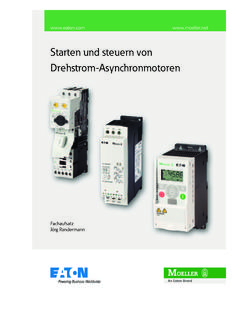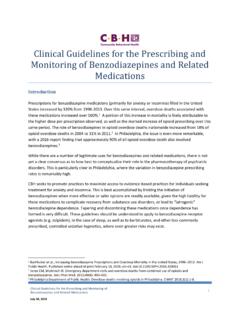Transcription of Streptococcus Laboratory General Methods
1 1 The reference used for compiling the Methods in Section I is: Murray, , Baron, E. J., Jorgensen, , Pfaller, , and Yolken, Manual of Clinical Microbiology, 8th ed. ASM Press: Washington, DC, 2003. The Streptococcus species identification Methods in Section II were compiled by Dr. Lynn Shewmaker. Also thanks to input from several individuals, including Richard Facklam and Lucia Teixeira. Section I. 1. Accuprobe-Enterococcus Accuprobe-Pneumococcus Test .. formation in carbohydrate solubility Test ..98. CAMP Catalase Clindamycin Esculin 1312. Gas from MRS Growth at 10 & 1917. Lancefield Group amino peptidase (LAP)..2119. Litmus Milk NaCl Tolerace 2624. Pyridoxal Requirement Test (Vitamin B6)..2725. Pyrrolidonlarylamindase (PYR).
2 Utilization Starch agar (extracellular polysaccharides).. 3230. Sucrose broth (5%).. 3331. Tellurite Vancomycin 3634. 37 Centers for Disease Control and PreventionUpdated March, 2014 2 Section II. Identification Procedures for Catalase-Negative Gram-positive Cocci, page 54. A. General Discription of the genera identified in this lab, page 54. Table 1. Identification of gram-positive Beta-hemolytic Table 2. Identification and reporting of -hemolytic Table 3. Identification of atypical group A Table 4. Identification of the S. anginous Non-beta-hemolytic Streptococcus Table 5. Identification non- -hemolytic Table 6. Characteristics of viridans Table 7. Identification of nutritionally variant B. Identification of Enterococcus and Table 8.
3 Identification of Enterococcus and Vagococcus C. Identification of Lactococcus Table 9. Identification of Lactococcus D. Identification of Gemella Table 10. Identification of Gemella E. Identification of Pediococcus and Tetragenococcus Table 11. Identification of Pediococcus and F. Identification of Leuconostoc Table 12. Identification of Leuconostoc G. Identification of Aerococcus and Table 13. Identification of Aerococcus and H. Identification of Table 14. Identification of I. Identification of Dolosigranulum, Ignavigranum,Facklamia, and Alloicococcus Table 15. Identification of Dolosigranulum, Ignavigranum, Facklamia, and Table 16. Rapid ID-32 for unusual gram positive 3 OUTLINE OF THE WORK FLOW FOR THE Streptococcus Laboratory 1.
4 If the culture is an unidentified gram-positive coccus, an Enterococcus, viridans Streptococcus , or of unknown identity (basically includes all cultures other than pneumococci, -hemolytic streptococci, and nutritionally variant streptococci), inoculate the following media. Inoculate a trypticase soy 5% sheep blood agar plate by streaking a heavy inoculum onto one-fourth of the plate and streak the remaining portion for isolated colonies. Place a vancomycin disk on the heaviest part of the inoculum, and put the plate into a candle extinction jar or a CO2 incubator for 18 to 24 h at 35C. 2. If the culture is identified as a beta-hemolytic Streptococcus , or group A, B, C, F, or G streptococci, inoculate a trypticase soy 5% sheep blood agar plate and place a bacitracin disk on the heavy part of the growth.
5 All plates should be incubated in a candle extinction jar or CO2 incubator for 18 h at 35 C. For most cultures submitted as group A streptococci, those that appear pure on the submitted culture, a 30 ml and a 5 ml Todd-Hewitt broth (THB) should be inoculated. Place the 5 ml THB in a 30 C incubator or leave at room temperature for 1-3 days. The 5 ml THB is used for T-agglutination typing of group A streptococci. Place the 30 ml broth at 35 C for 16 to 18 h. Do not incubate longer than 18 h. For beta-hemolytic streptococci other than group A, a 30 ml THB can also be inoculated and placed at 35 C for 18 to 24 h. Some strains may take more than one day of incubation, no harm is done by incubating these broths longer than 24 to 72 h. The 30 ml THB is used for serogrouping and serotyping in some cases.
6 4. If the culture is submitted as a nutritionally deficient Streptococcus (NVS), inoculate an entire trypticase soy blood agar plate with the culture. Perpendicular to this streak, carefully make a single streak with a Staphylococcus aureus culture. This test will determine if the unknown culture forms satellite colonies adjacent to the staphylococci, a characteristic of all NVS. Incubate the plate in CO2 or a candle extinction jar at 35 C for 24 to 48 h. Examples of unusual or unexpected results: The blood agar plates used in the manner described above are for checking for purity of cultures. If any of the results are unusual or not expected or the culture is contaminated the test must be repeated. Vancomycin resistant streptococci or other unknowns other than leuconostocs and pediococci, which are intrinsically vancomycin resistant.
7 4 AccuProbe-Enterococcus Test I. Principle The AccuProbe-Enterococcus test is used to aid in the identification of atypical enterococci and to help differentiate between Enterococcus and Lactococcus strains. II. Inoculum An overnight culture grown on blood agar incubated 35 C in CO2. III. Reagents and Materials Genprobe Accuprobe Enterococcus Culture Identification Test, GEN-PROBE Inc. San Diego, CA IV. Procedure The test is performed according to the package insert instructions. V. Reading and Interpretaion Automated VI. Limitations Use care with the amount of colonies used. Too many colonies will result in a false positive test. VII. Quality Control Quality controls, positive and negative reactions are determined each day the test is determined.
8 E. faecalis SS1273 and S. sanguinis SS910 are used as the positive and negative controls respecitively. AccuProbe-Pneumococcus Test I. Principle The AccuProbe-Pneumococcus test is used to aid in the identification of atypical pneumococci and to help differentiate between viridans Streptococcus strains. II. Inoculum An overnight culture grown on blood agar incubated 35 C in CO2. III. Reagents and Materials Genprobe Accuprobe Pneumococcus Culture Identification Test, GEN-PROBE Inc. San Diego, CA IV. Procedure The test is performed according to the package insert instructions. V. Reading and Interpretaion Automated VI. Limitations Use care with the amount of colonies used. Too many colonies will result in a false positive test. VII. Quality Control Quality controls, positive and negative reactions are determined each day the test is determined.
9 S. pneumonia and S. sanguinis SS910 are used as the positive and negative controls respecitively. 5 Acid Formation in Carbohydrate Broths The ability of bacteria to form acid in some carbohydrate broths and not in others can be used in identification schemes. If the bacteria acidify the carbohydrate, the pH will change and the indicator (brom cresol purple) will turn yellow. II. Inoculum An overnight culture in Todd Hewitt broth incubated over night at 35 C or a fresh bacterial suspension in Todd Hewitt broth may be used as the inoculum. III. Reagents and Materials 1. Heart Infusion broth with 1% carbohydrate and brom cresol purple indicator. Most of the carbohydrate broths are commercially available (Remel). An asterisk indicates those that are made by CDC media lab.
10 2. Pipet IV. Procedure 1. Inoculate carbohydrate broth tube with 1-3 drops of inoculum. 2. The broth tube is then incubated at 35 C for up to 7 days in ambient air. Fastidious organisms may be held up to 14d. V. Reading and Interpretation A positive reaction is recorded when the broth turns yellow. A negative reaction is when no color change occurs. A definite color change that is not quite yellow may be interpreted as a weak positive reaction. Limitations Do not incubate in CO2 as this may alter the pH. IV. Quality Control Each lot and shipment of carbohydrate broth medium is tested for positive and negative reactions upon receipt in the Laboratory . The strains and reactions for each broth are listed below. Carbohydrate Positive Reaction Negative Reaction Strain # species Strain # species Arabinose SS-1274, E.












